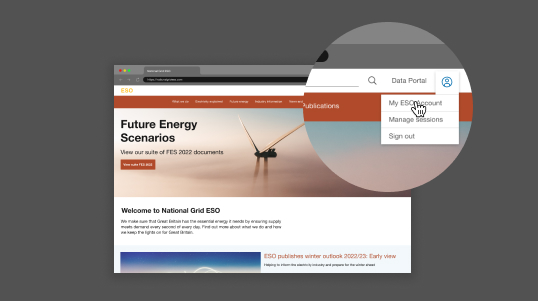
‘Sonar of the power grid’: new inertia measurement tools planned for Great Britain’s electricity system
11 Dec 2020 - 4 minute read
As Electricity System Operator it’s our job to keep the grid stable, including managing its key properties such as voltage or frequency – and, increasingly, levels of something called inertia.
Our electricity control room is developing two new tools to manage this key characteristic – part of a pioneering world first approach to measuring and managing power grid inertia.
In this blog, the Head of our Control room Rob Rome explains more.
First things first – what is inertia?
If you look in the dictionary, inertia is defined as an object’s tendency to continue in its existing state of rest or motion. In other words, it stays still if it’s still, or keeps it moving if it’s moving. For moving objects, only an external force (like friction) will make it stop.
This makes inertia incredibly important to the stable operation of the electricity system. Many generators producing electricity for the grid have spinning parts – they rotate at the right frequency to help balance supply and demand, and then can spin faster or slower if needed.
The kinetic energy ‘stored’ in these spinning parts is our system inertia. If there’s a sudden change in system frequency, these parts will carry on spinning – even if the generator itself has lost power – and will slow down that change (what we call the rate of change of frequency) while our control room restores balance.
Inertia behaves a bit like the shock absorbers in your car’s suspension, which dampen the effect of a sudden bump in the road and keep your car stable and moving forward.
What’s the new approach?
The calculations we currently use for inertia management (monitoring which transmission-connected generators are running and adding an estimate of inertia from embedded generation and demand) help make our system one of the most reliable in the world.
However, the increase in renewable generation means this is becoming more complex and it’s important we continue to plan for the future. Working in partnership with Reactive Technologies and GE Digital we have developed two new approaches due to go live in our electricity control room in the coming months.
These new pioneering tools are part of a range of new world-first approaches to grid management and will boost our visibility of inertia across the system, helping to bring more renewable generation online.
Firstly, we are deploying GE Digital’s Effective Inertia measurement and forecasting software. Effective Inertia captures not only the physical inertia from rotating ‘synchronous’ generation but also the inertia-like effects of non-synchronous generation such as wind and solar, and passive responses from domestic and industrial demand.
GE Digital’s solution measures effective inertia non-intrusively and on a regional basis, using measurements of grid frequency and power flows taken 50 times per second.
This gives our operators a real-time view of inertia in each region of the grid, as well as the total GB level. By applying advanced machine learning, the software also provides forecasts of effective inertia based on predictors such as levels of demand and different generation types – giving us an important tool to help plan the system operation effectively.
Secondly, our partnership with Reactive Technologies will see an ultracapacitor used to directly measure inertia by sending pulses of power through the grid - similar to the underwater sound waves used in sonar. These pulses are measured and processed by Reactive’s ‘XMU’ measurement units and their cloud computing platform. Using this system they can accurately map any deviations in levels of inertia and electrical frequency, allowing an almost instantaneous response to keep the grid in balance.
A fleet of XMUs has already been rolled out across the UK, measuring at extremely high granularity and allowing an independent data source to the existing PMUs.
The modulator will be delivered next year and will allow the system to then overlay highly accurate inertia data. The technology, developed in Finland by Reactive’s team of ex-Nokia communications engineers, is the first ever to enable the sending of signals through a power grid anywhere in the world and will allow for inertia to be directly measured in this way for the first time.
These two approaches will work side by side to provide us with a real-time view of the power system and a world-leading inertia management capability.
How is this boosting Britain’s zero carbon ambition?
These new pioneering tools are part of a range of new world-first approaches to grid management and will boost our visibility of inertia across the system, helping to bring more renewable generation online.
This, and other stability services included in our pathfinder project, are a crucial piece of the puzzle we’re tackling to be able to meet our 2025 zero carbon operation ambition – and contribute to the government’s 2050 net zero target.
